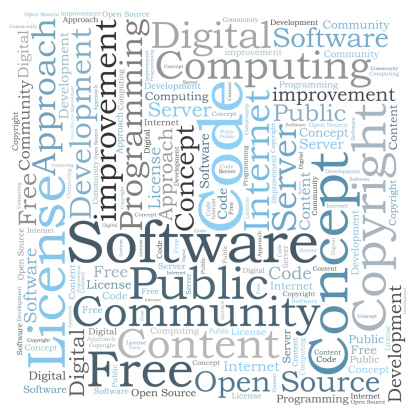By Cliff Ennico
“We are a small software company. We have spent years developing and copyrighting our product, which is frequently ‘bundled’ with software created by other companies.
We recently received a notice from a software company we’ve never heard of saying we have to hand over the source code to our product. Apparently this other company’s product is ‘open source,’ and was bundled into a software product into which our product was also bundled.
The bundling of our product doesn’t involve any alteration or manipulation of the other product’s source code. Our product is merely an ‘add on’ or attachment to that product. Is it true that our product is now ‘open source’ because of the bundling?
We have spent years developing and marketing our product – if it is now ‘open source’ we might as well go out of business.”
Traditionally, computer software is copyrighted by the developer when it is released. This gives the developer the exclusive right to exploit the software (to “make copies”) for a while. Anyone wishing to use the software must license it from the developer, and pay a fee, but they get the software only in “object code” form that prohibits them from changing the software. To be able to change or improve the software, a licensee must have access to the product’s “source code”, which most software companies guard like the key to Fort Knox.
Some renegade developers in the mid-1980s decided that wasn’t fair, and created the “open source” movement. Unlike proprietary software, the source code of “open source” software is made available to anyone who wants to use it. They may have to pay a fee (some “open source” software is free, some isn’t), but as long as they pay the fee they can use the source code to customize, improve and make changes to the “open source” software and create “derivative works” as long as they share any developments with the original developer and agree to make them available to other people as well.
Many popular software applications, such as the Internet browser “Firefox”, are open source. The idea is that by making the source code widely available, the developer of open source software has access to the minds of thousands of developers around the world without having to pay for their contributions. The products so created are much better designed and better protected against viruses, at least in theory.
So far, so good. But what happens when an open source product and a proprietary (copyrighted) product share the same space? As Shakespeare would have said, “ay, there’s the rub.”
Software developers frequently “bundle” their products with others. If you have ever tried to “PDF” a Microsoft Word file, you know that Adobe Reader has to be able to read Word files in order to do so. For that to happen, Reader and Word have to speak to each other, and that involves some “enmeshing” of the two programs.
As long as the two products are proprietary, “bundling” is relatively easy – each company licenses its product to the other for a specific purpose. But if one of the two products is open source – hoo boy.
Under most open source licenses (an excellent discussion of the different types of open source licenses can be found at http://en.wikipedia.org/wiki/Comparison_of_free_and_open-source_software_licenses), if an open source product is bundled with a proprietary (non-open source) product, the proprietary product automatically becomes open source. Since developers of proprietary software are frequently unaware that their products are being bundled with other products that have become open source, situations like this week’s e-mail are becoming increasingly common.
To solve this problem, our reader will have to contact the company whose product has been “bundled” with theirs and find out the type of open source license involved. Under the most common open source license (called the “General Public License” or GPL), any product that comes into contact with an open source product itself becomes open source. If the other product’s license was GPL, our reader will have to disengage its product promptly from the other product and explain to the open source developer exactly what happened. If it is truly the case that the two products were not “meshed” but operated independently, the dispute should be settled fairly quickly.
Responding to the concerns of proprietary software developers who do not want to inadvertently lose control over their products, the open source movement recently adopted a “lesser general public license” or LGPL (www.gnu.org/licenses/lgpl.html). A product licensed under the LGPL is open source, but another product bundled with it does not automatically become open source unless the other developer agrees to that.
Going forward, our reader needs to change its license agreement to allow “bundling” only with other proprietary (non-open source) products, or open source products that are licensed under the LGPL. This may cost the reader some business, but will protect its copyright until someone figures out a better way to handle this situation.
Cliff Ennico (www.succeedinginyourbusiness.com), a leading expert on small business law and taxes, is the author of “Small Business Survival Guide,” “The eBay Seller’s Tax and Legal Answer Book” and 15 other books. @LegalCareerInfo.







